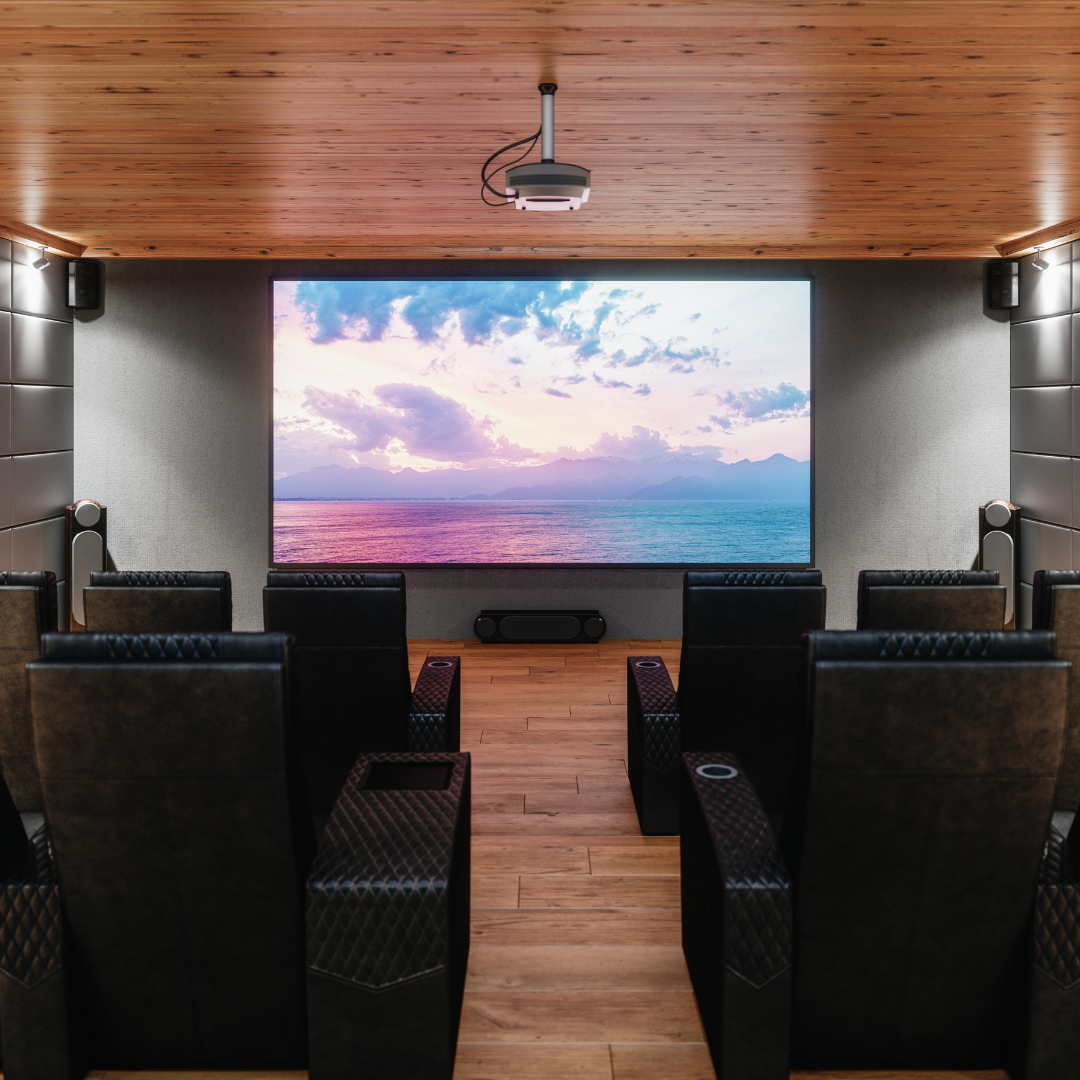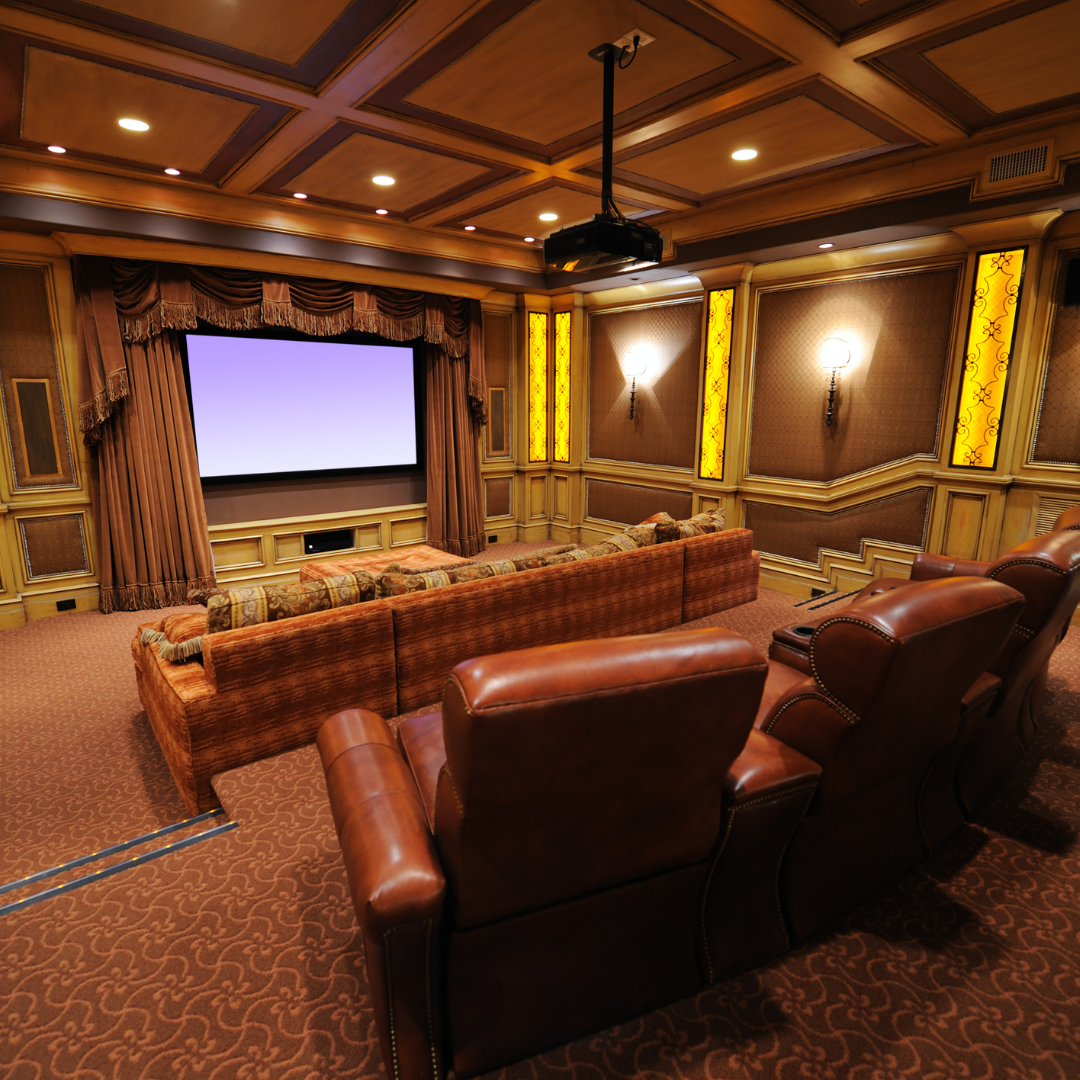A home cinema room is a dedicated space within a home set aside for watching videos, movies, and TV shows on a big screen. Thus, little else happens in a home cinema room apart from screen-related activities.
In the current era, screening means far more than it ever has. There are dozens of video streaming services like
- Netflix,
- Hulu,
- Amazon
- Prime, and
- YouTube,
in addition to other video services like Blu-ray movies, cable TV, and video gaming on next-generation game consoles and powerful PCs.
Here are a few ideas to help you lay out the perfect home cinema room setup.
Ambient light control

You probably want a home cinema room that is enclosed from any unwanted light. This means choosing a space within the home that is not directly adjacent to the outdoors. If your home cinema room has a window, you may want to get thick dark-colored curtains that completely block out sunlight and any external security lights that come on at night.
You may also want to consider other sources of light from outside the home cinema room. This includes light from around the room’s doors and artificial light within the room itself.
Within the home cinema room, you may want some accent lights rather than bright overhead lighting. If you settle on overhead lighting, you may want to set them on a dimmer switch so that you can adjust the brightness as you see fit.
This is because you are less likely to need bright light apart from when you are cleaning up or looking for that remote lost somewhere in the couch cushions.
During home building and remodeling projects, the usual aim is to add more natural light to the home. Remember that for home cinema rooms, this is where you want the exact opposite of adding natural light since you want less light rather than more.
When using a video projector, any light bleed from outside the room interferes with the clarity of images and the immersive viewing experience. Even with flat-screen TV sets that are brighter than projected images, the viewing experience benefits from lower lighting within and around the home cinema room.
If you have lots of ambient light that is difficult or impossible to control, you will most likely want to consider a bright TV set rather than a video projector. However, if you prefer a video projector to a TV, you will need to find a projector with a high lumens rating.
Regardless of your preferred viewing device, the best way to control ambient light is to stop it before it starts rather than trying to block it out.
Consider using dark paint for the walls, ceiling, carpets, and curtains in your home cinema room, which adds to the general control of ambient light and directs the focus to your screening device.
Ambient sound control

A conventional home is likely to have many different sounds going on at the same time from different rooms. This may be from a dishwasher, clothes dryers, and washers, music, plumbing noises, voices from other rooms, and the sounds of cars and lawnmowers from outside the house.
You can reduce the effect of these undesired noises, first by choosing a dedicated space for your home cinema room, and secondly by soundproofing the room. This can be achieved by installing special sound-reducing foam, and wallboards and by adding a second layer of drywall.
Further soundproofing can be achieved by putting up thick curtains that block both light and sound and replacing hollow core doors with solid wooden doors that do a better job of blocking out sound. You may also want to seal cracks with caulk to prevent more sound from seeping in.
You can enhance the sound deadening by installing wall-to-wall carpeting in the home cinema room and having soft, cushioned seats which absorb sounds better than furniture with exposed hard elements.
Install proper seating

You don’t want anyone enjoying themselves in your home cinema room to have their view blocked, do you?
To prevent this, you can opt for tiered seating which is a true luxury for a cinema space. A modest 6-inch height boost between seating rows can be enough to free up sight lines.
Alternatively, you can opt for comfortable couches that border the edge of the room and face the screen. Remember that seating does not need to be costly or extremely luxurious, rather they should be soft and plush with a reclined back and not have a high backing that obstructs the view of those behind them.
Can a home cinema room be shared with other spaces?

While you can share your home cinema space with other functions, you are likely to have a less immersive viewing experience.
Experts indicate that when a home cinema room shares a physical space with other activities, the cinematic experience is lessened. An example is when a home theater exists on the same open floor plan as a kitchen.
Cooking smells, sounds and people’s voices are likely to seep in, distracting you from a viewing experience.
The same case applies to when a home movie room is shared with the living room space. You may find that light is difficult to control, which is quite inconvenient when you plan on using a projector rather than a television set.
Also, many people constantly move in and out of a living room. This may be a bit distracting when viewing your beloved movies, TV shows, and trendy videos.
Spare bedrooms, on the other hand, work well as dedicated home cinema rooms. However, they need to be big enough so that viewers maintain some distance from the screen. This is particularly applicable when using video projectors.
Video systems experts recommend at least 14 feet of throw distance for a 150-inch diagonal picture. However, there are short-throw projectors available on the market that can work for smaller viewing spaces.
Conclusion
A home cinema room does not have to be overly complicated for it to be effective and enjoyable. With adequate sound and light control paired with comfortable and non-obstructive seating, a home cinema room is something you will find yourself enjoying several times over.
With some cable management and accent lighting, your home cinema room will be a cozy and luxurious space that you look forward to spending lots of time watching your favorite movies and TV shows.
Ensure you contact a home cinema room expert before embarking on the project, and do some research on the internet to get a visual idea of what to expect in your home cinema room.






Leave a comment
This site is protected by hCaptcha and the hCaptcha Privacy Policy and Terms of Service apply.